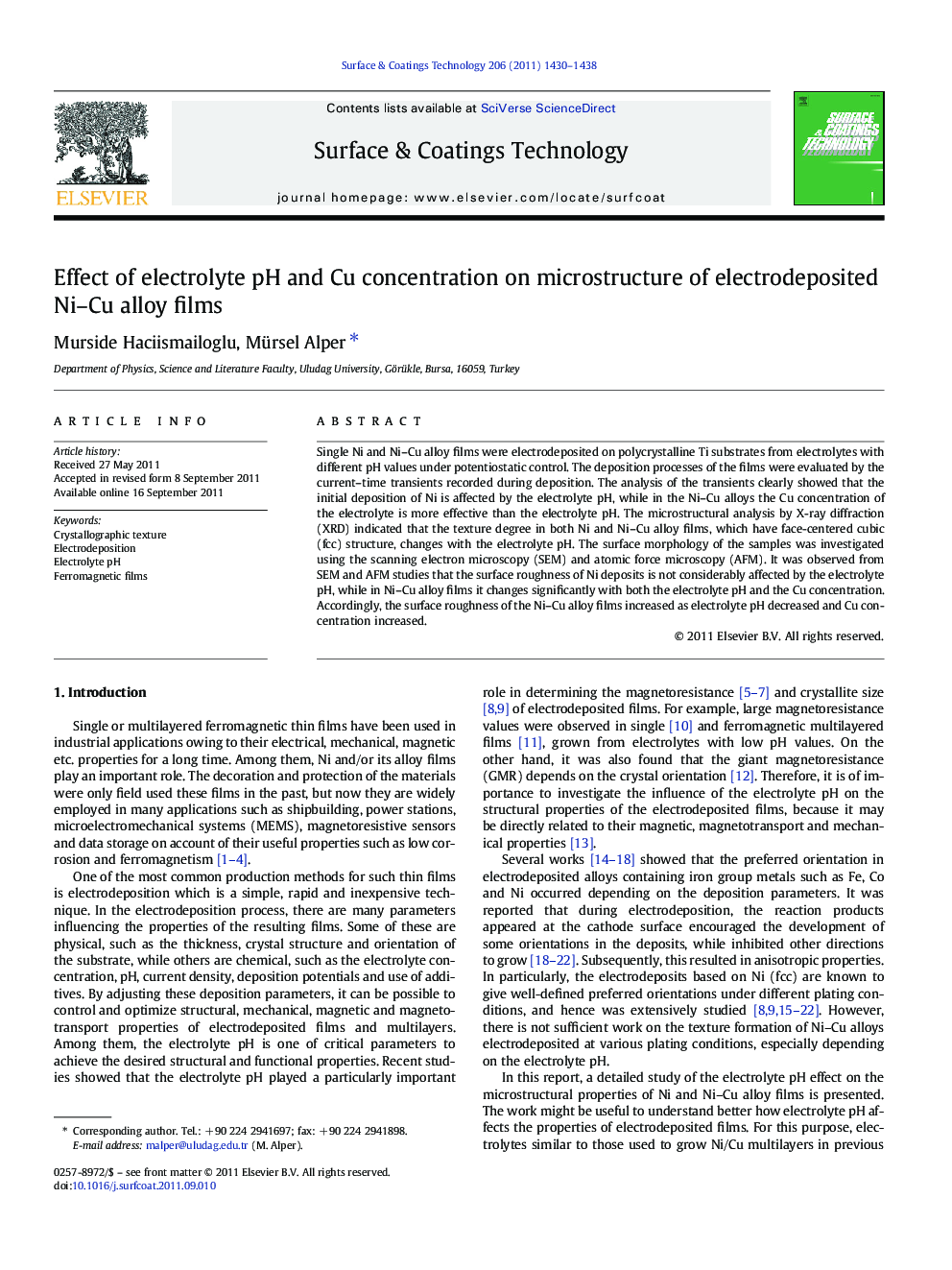| Article ID | Journal | Published Year | Pages | File Type |
|---|---|---|---|---|
| 1658745 | Surface and Coatings Technology | 2011 | 9 Pages |
Single Ni and Ni–Cu alloy films were electrodeposited on polycrystalline Ti substrates from electrolytes with different pH values under potentiostatic control. The deposition processes of the films were evaluated by the current–time transients recorded during deposition. The analysis of the transients clearly showed that the initial deposition of Ni is affected by the electrolyte pH, while in the Ni–Cu alloys the Cu concentration of the electrolyte is more effective than the electrolyte pH. The microstructural analysis by X-ray diffraction (XRD) indicated that the texture degree in both Ni and Ni–Cu alloy films, which have face-centered cubic (fcc) structure, changes with the electrolyte pH. The surface morphology of the samples was investigated using the scanning electron microscopy (SEM) and atomic force microscopy (AFM). It was observed from SEM and AFM studies that the surface roughness of Ni deposits is not considerably affected by the electrolyte pH, while in Ni–Cu alloy films it changes significantly with both the electrolyte pH and the Cu concentration. Accordingly, the surface roughness of the Ni–Cu alloy films increased as electrolyte pH decreased and Cu concentration increased.
► The effects of the electrolyte pH and Cu concentration on Ni–Cu alloy films. ► The electrolyte pH affects the initial deposition of the Ni films but not Ni–Cu films. ► The Cu concentration affects the initial deposition of the Ni–Cu alloy films. ► Decreasing electrolyte pH increases the surface roughness of the Ni–Cu films. ► Increasing Cu content increases the surface roughness of the Ni–Cu films.
